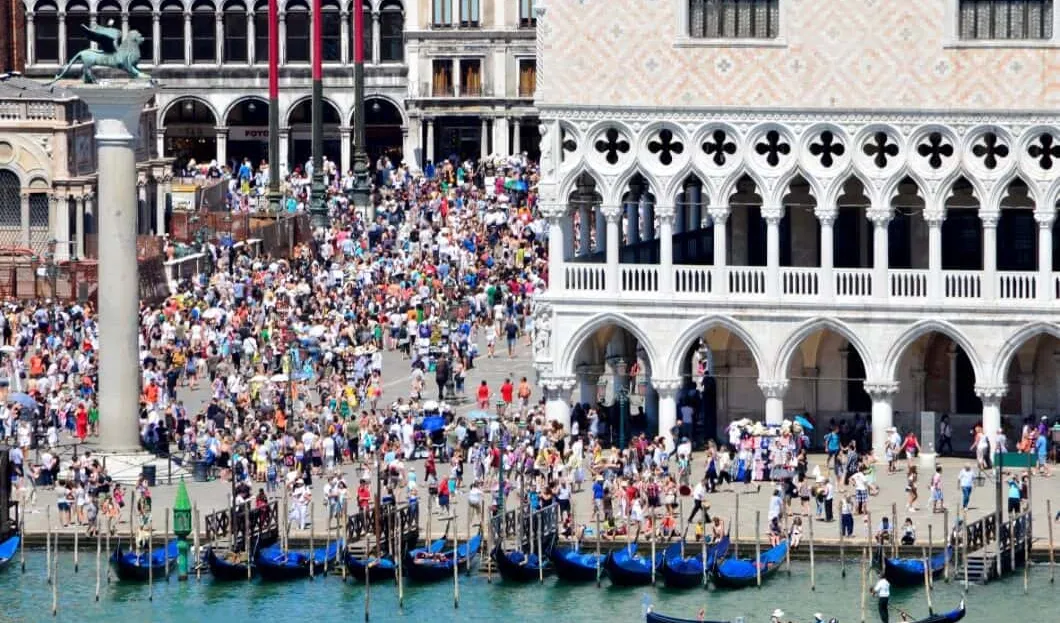
Several destinations are victims of their success on the old continent, and the masses of tourists could ruin your vacation. Here are destinations to avoid in Europe unless you want to suffer the pains of over-tourism: tramping in crowded streets, searching for a corner of sand to put your towel a few centimeters from your neighbor, booking a restaurant 3 days in advance and no longer being able to look at a landscape without a swarm of smartphones spoiling the panorama.
In the first nine months of 2022, international tourism had returned to 65% of its pre-closure level, with 700 million travelers, including 477 million arrivals in Europe, according to the UNWTO (World Tourism Organization). We detail the top five over-tourism destinations in Europe.
Dubrovnik, the City under Attack
Croatia's medieval wonder is the busiest city, with 36 tourists per capita. Unfortunately, this pearl of the Adriatic, known for its high ramparts and well-preserved old town, suffers from its success. Every summer, cruise ship passengers flock there in droves. The crowds are so large that the 41,500 inhabitants (in 2021) watch television to find out when the town's main street will be busy again.
Dubrovnik is a UNESCO World Heritage Site, but its narrow streets are always crowded. In 2017, UNESCO required the city to establish a limit on the number of people, or else it would lose its designation. So, now, Dubrovnik only allows 8,000 people at a time, and 116 cameras monitor the city to ensure compliance.

The Game of Thrones series set up one of its filming locations there, reviving interest in this wonderful backdrop. The local authorities have banned wheeled suitcases in the city center to combat noise pollution. A compulsory locker and a paid porter service have been introduced. The bare torso is forbidden. Space is scarce; to find a hotel in the city center, count on 200 euros per night for a three-star.
Venice, the Old Serenissima
Another destination to avoid is the Italian Venice. The city is struggling with overcrowding due to the high tourists to locals ratio (21). To tackle this issue, the city has implemented measures such as banning cruise ships from the lagoon and prohibiting launching souvenir shops near St. Mark's Square. An entrance fee will also be introduced for day visitors starting in 2025, varying from 3 to 10 euros depending on their income level. Before the visit, this fee will be paid online through a website or smartphone application. The system will be tested in 2024 during a few days in the spring.
Bruges, Disneylandization on the March
In January 2019, the European Parliament published a report on Bruges, the Venice of the North. Despite a slight 7% decrease due to the pandemic, the city still welcomed 7.3 million visitors in 2022. As early as 1996, Bruges implemented a strategy to manage tourism by concentrating it in the "golden triangle" around the egg market in the historic center. Visitors arrive in high season, May, July, August, and December. However, this strategy to protect other neighborhoods from inconvenience has led to a surge in real estate prices. As a result, the historic center has turned into a tourist hotspot resembling a Belgian-themed Disneyland, with numerous souvenir shops, chocolate stores, and beer shops.
Rhodes, Laboratory for Sustainable Tourism
Rhodes, a UNESCO World Heritage Site, faces the harmful effects of overdevelopment and overpopulation caused by tourism. However, the city promotes sustainable tourism through the "Rhodes Co-Lab" project. This initiative, supported by Prime Minister Kyriakos Mitsotakis, the South Aegean region, and tourism leader TUI group, will establish a think tank of international experts. This is to enhance tourism on the island. Although details remain unclear, Rhodes is committed to protecting its unique heritage while promoting responsible tourism.
Reykjavik, Pressure on Glaciers
With 653,000 visitors in the summer of 2022 (via Reykjavik airport), Iceland has not yet regained the record of 2018 (804,000), but post-Covid-19 growth has quickly resumed. The tourism boom of the 2010s is confirmed and worrying. The island nation combines tourist attraction and conservation by encouraging extended stays, slower travel, and more dispersed accommodation. Half of the 11,600 hotel rooms are located in the capital region. 89% occupancy in July and August 2022. Private rentals have become more prevalent to accommodate the influx of tourists damaging the wilderness in their large numbers.









